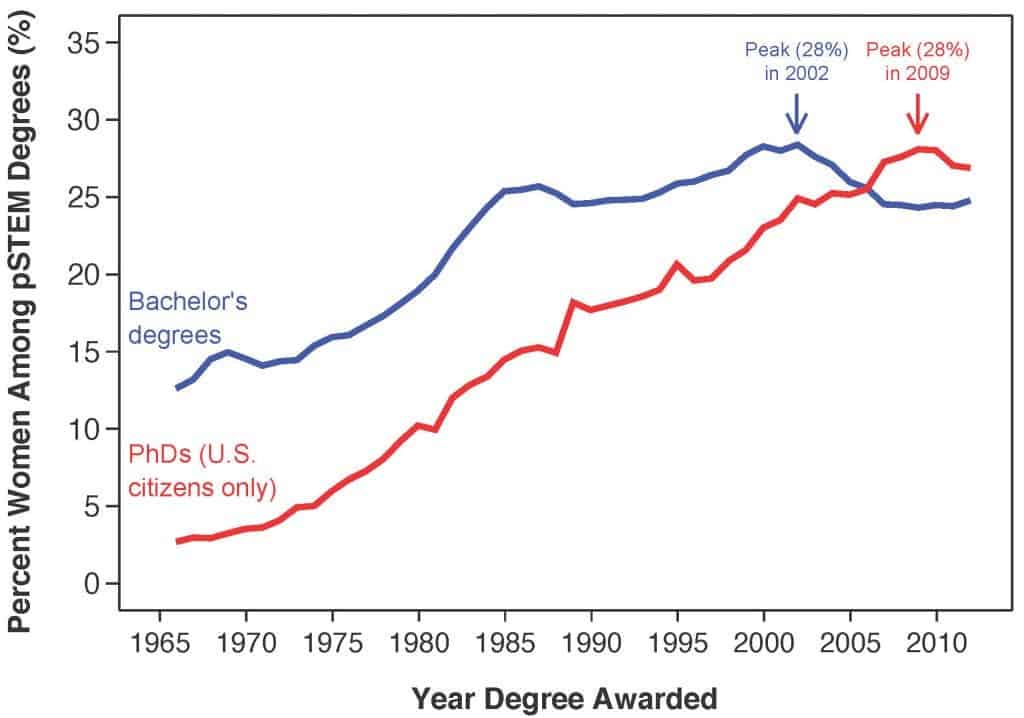Many scholars who still seek to explain why more women leave the science, technology, engineering and mathematics (STEM) pipeline than men are stuck in old times. If in the 1970s, men were 1.6 to 1.7 times as likely as women to later earn a STEM Ph.D., by the 1990s the gender gap had closed and both sexes are as likely to complete their education. Efforts to bridge the gap and promote gender diversity have thus been fruitful. There’s still gender gap in STEM among those who first enroll in college, with roughly three times as many men than women.
The “leaky pipeline” metaphor is often used to illustrate how students on a bachelor’s-to-Ph.D. trail stray off this particular path. It’s believed that more women than men “leak” from the pipeline, but a Northwestern University analysis suggests otherwise. The researchers used data from two large nationally representative research samples to reconstruct a 30-year portrait of how bachelor’s-to-Ph.D. persistence rates for men and women have changed in the United States since the 1970s. The graph below illustrates their findings. Decades ago there was a considerable leak gap, but presently this gap is considerably smaller. Particularly, the gender persistence gap completely closed in pSTEM fields (physical science, technology, engineering and mathematics), where women are the least represented.
Yes, more men earn STEM PhDs then women, but this difference can no longer be explained by lack of persistence. The findings appeared in the journal Frontiers in Psychology.
“Our analysis shows that women are overcoming any potential gender biases that may exist in graduate school or undergraduate mentoring about pursing graduate school,” said David Miller, an advanced doctoral student in psychology at Northwestern and lead author of the study. “In fact, the percentage of women among pSTEM degree earners is now higher at the Ph.D. level than at the bachelor’s, 27 percent versus 25 percent.”
As such, the widely used leaky pipeline metaphor is a dated description of gender differences in postsecondary STEM education. Past research has also found that there’s no difference in persistence past the PhD level. For instance, in physical science and engineering fields, male and female Ph.D. holders are equally likely to earn assistant professorships and academic tenure, according to Miller. The leaky pipeline metaphor is still relevant in life science and economics, however, where more women leak from the Ph.D.-to-assistant-professor pipeline than men.
The findings should prove particularly useful to those in charge of diverting academic resources. Efforts targeted at bridging a leak gap in most fields would be ineffective and ill placed. Resources would thus be more valued when used to increase women representation in STEM. For instance, women’s representation among pSTEM bachelor’s degrees has been decreasing during the past decade, and this could use “plugging”.
While the researchers are encouraged that gender gaps in doctoral persistence have closed, they stressed that accurately assessing and changing gender biases in science should remain an important goal for educators and policy makers.












